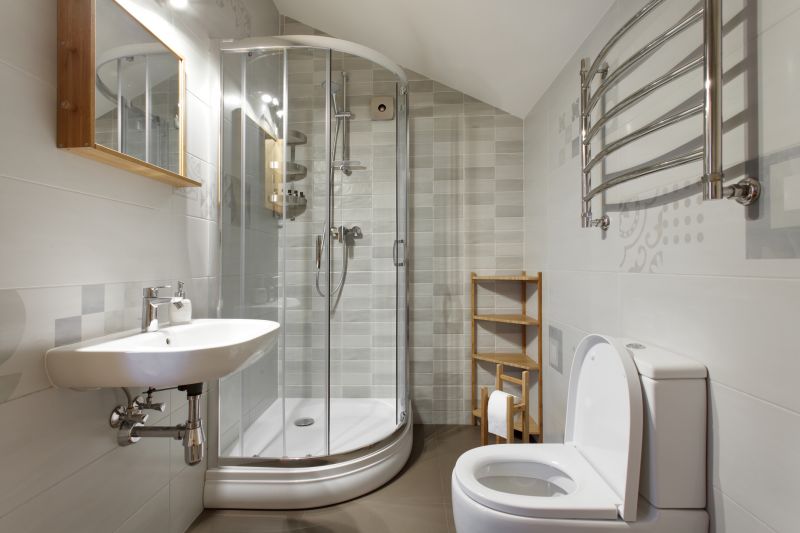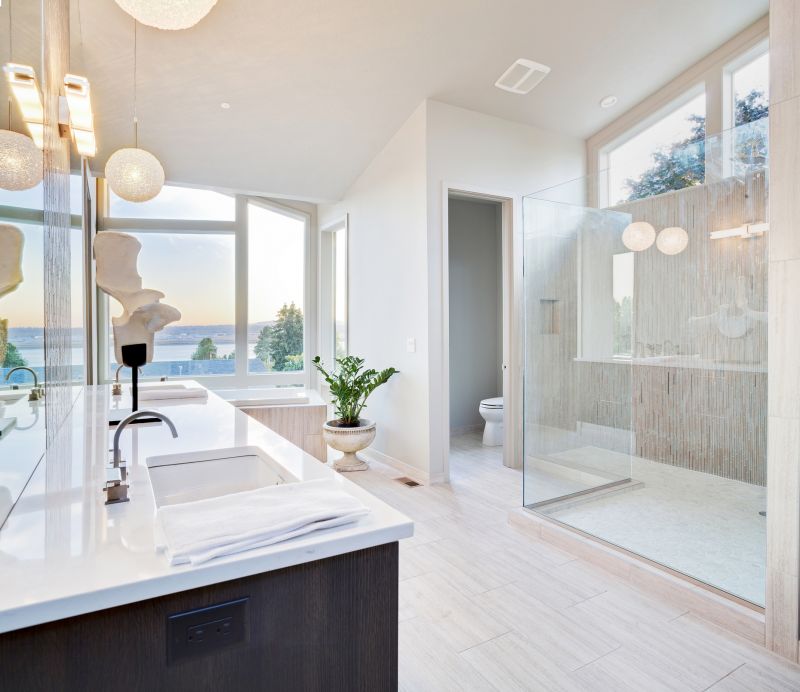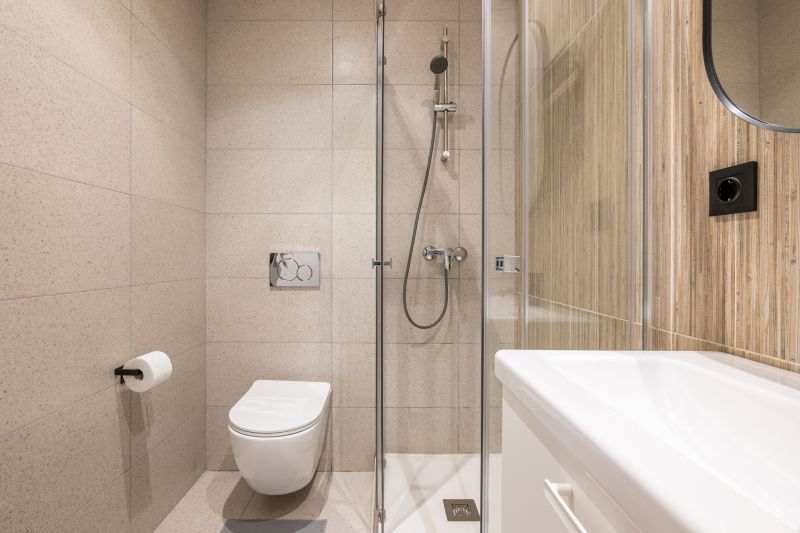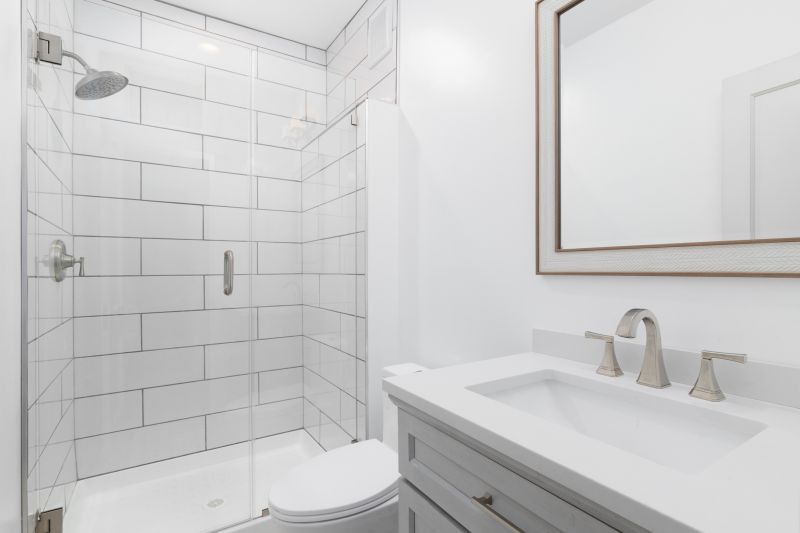Small Bathroom Shower Design Ideas for Space Optimization
Designing a small bathroom shower involves maximizing space while maintaining functionality and aesthetic appeal. Popular layouts include corner showers, walk-in designs, and enclosed stalls that utilize every inch efficiently. Proper planning can create the illusion of a larger space, making the bathroom feel more open and comfortable.
Corner showers are ideal for small bathrooms as they utilize existing corners, freeing up floor space for other fixtures. They often feature sliding doors or pivoting panels to optimize accessibility without encroaching on the room's footprint.
Walk-in showers with frameless glass enclosures provide a sleek, open look that visually enlarges the space. These designs often incorporate built-in niches and benches for convenience and style.

Compact shower layouts can be customized with space-saving fixtures and clever storage solutions to enhance usability.

Innovative designs incorporate glass partitions and minimal framing to maximize visual space.

Smart use of vertical space with niche shelves and hanging organizers helps keep the shower area uncluttered.

Using light colors and reflective surfaces enhances the sense of openness in small shower areas.
| Layout Type | Ideal Space Size |
|---|---|
| Corner Shower | 25-45 square feet |
| Walk-In Shower | 30-50 square feet |
| Tub-Shower Combo | 35-55 square feet |
| Neo-Angle Shower | 25-40 square feet |
| Shower with Sliding Door | 20-40 square feet |
Choosing the right shower layout for a small bathroom depends on the available space and desired features. Corner showers are perfect when space is limited, offering efficient use of corner areas. Walk-in showers provide a modern aesthetic and can be designed to appear larger through the use of glass and light colors. Neo-angle showers combine the benefits of corner placement with a more spacious feel, utilizing angled glass panels to fit into tight corners.
Incorporating innovative storage options such as built-in niches, corner shelves, or hanging organizers can significantly improve functionality without sacrificing space. Light-colored tiles and reflective surfaces help to create an airy atmosphere, making the bathroom appear larger than it is. Proper lighting, including recessed fixtures and natural light, further enhances the sense of openness.
Designers often recommend frameless glass enclosures for small bathrooms because they minimize visual barriers and contribute to an uncluttered look. Sliding or bi-fold doors are also popular choices to conserve space while maintaining ease of access. When planning a small bathroom shower layout, attention to detail in both design and materials can lead to a highly functional and visually appealing space.
Ultimately, optimizing a small bathroom shower involves balancing space constraints with aesthetic preferences and practical needs. Thoughtful layout choices combined with smart storage solutions and light-enhancing elements can transform a compact bathroom into a comfortable and stylish retreat.



